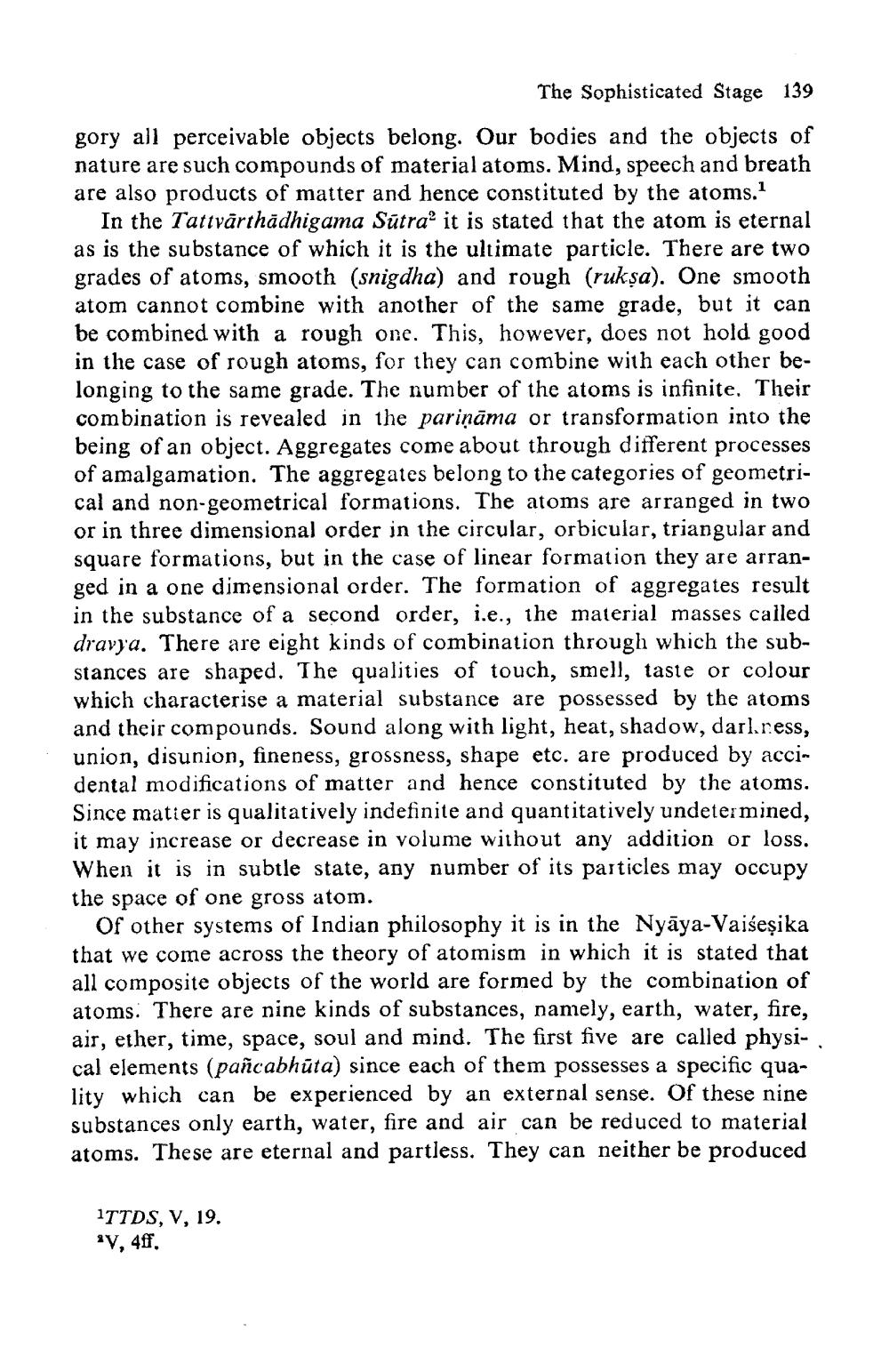________________
The Sophisticated Stage 139
gory all perceivable objects belong. Our bodies and the objects of nature are such compounds of material atoms. Mind, speech and breath are also products of matter and hence constituted by the atoms.
In the Tattvārthādhigama Sūtra' it is stated that the atom is eternal as is the substance of which it is the ultimate particle. There are two grades of atoms, smooth (snigdha) and rough (rukşa). One smooth atom cannot combine with another of the same grade, but it can be combined with a rough one. This, however, does not hold good in the case of rough atoms, for they can combine with each other belonging to the same grade. The number of the atoms is infinite. Their combination is revealed in the parināma or transformation into the being of an object. Aggregates come about through different processes of amalgamation. The aggregates belong to the categories of geometrical and non-geometrical formations. The atoms are arranged in two or in three dimensional order in the circular, orbicular, triangular and square formations, but in the case of linear formation they are arranged in a one dimensional order. The formation of aggregates result in the substance of a second order, i.e., the material masses called dravja. There are eight kinds of combination through which the substances are shaped. The qualities of touch, smell, taste or colour which characterise a material substance are possessed by the atoms and their compounds. Sound along with light, heat, shadow, darhress, union, disunion, fineness, grossness, shape etc. are produced by accidental modifications of matter and hence constituted by the atoms. Since matier is qualitatively indefinite and quantitatively undetermined, it may increase or decrease in volume without any addition or loss. When it is in subtle state, any number of its particles may occupy the space of one gross atom.
Of other systems of Indian philosophy it is in the Nyāya-Vaišeșika that we come across the theory of atomism in which it is stated that all composite objects of the world are formed by the combination of atoms. There are nine kinds of substances, namely, earth, water, fire, air, ether, time, space, soul and mind. The first five are called physi- . cal elements (pañcabhūta) since each of them possesses a specific quality which can be experienced by an external sense. Of these nine substances only earth, water, fire and air can be reduced to material atoms. These are eternal and partless. They can neither be produced
ITTDS, V, 19. V, 411,




